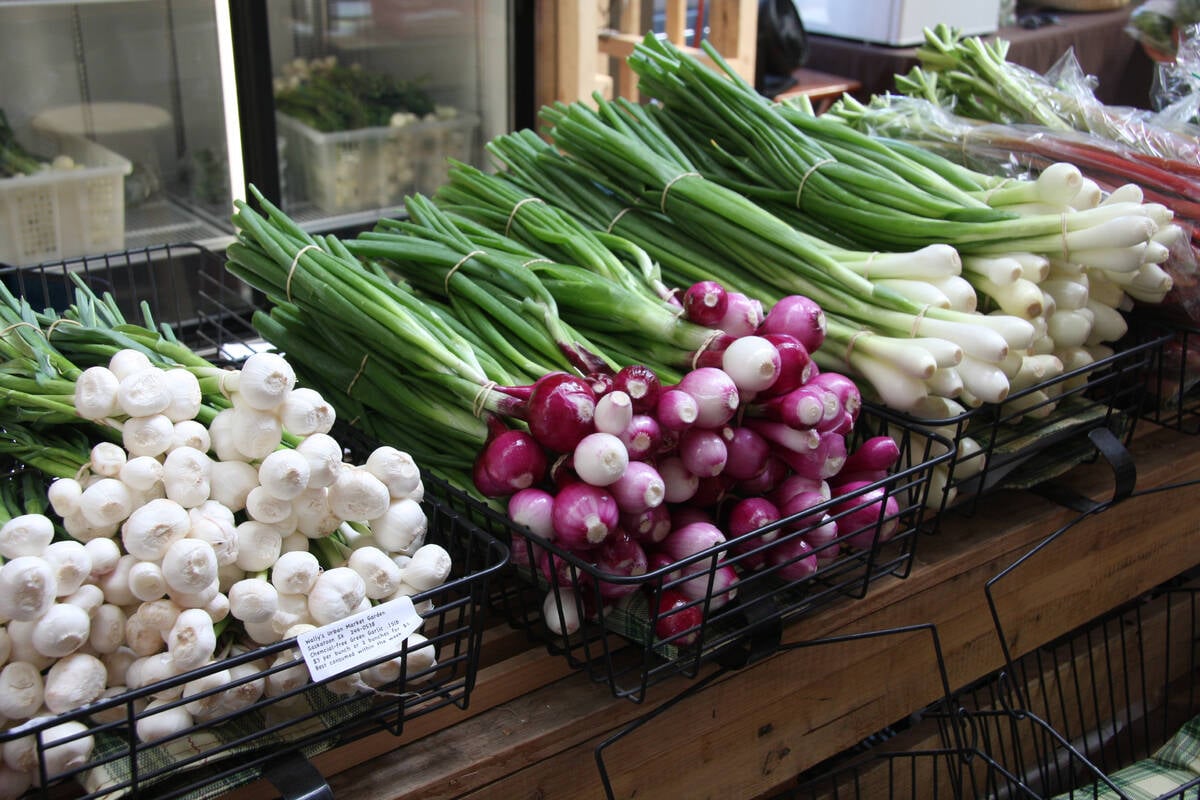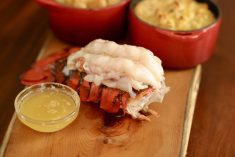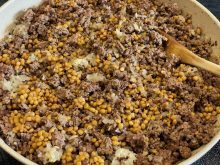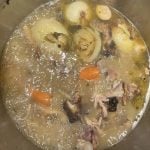Staycations have been a mainstay for the past couple years. Travel, especially international travel, has been precarious during the COVID-19 pandemic.
I hope you have taken advantage of this time to enjoy your own backyard. I know that I have. Recently, I treated myself and booked in for the chef’s five course menu at Dakota Dunes Resort and Casino.
Dakota Dunes Resort, located 20 minutes south of Saskatoon on traditional Whitecap and Dakota unceded territory, opened just before the pandemic. Talk about timing, but they persevered. They hired chef de cuisine Jeffry Rocha and went all out.
Read Also

Starting a small business comes with legal considerations
This article sets out some of the legal considerations to start a business to sell home-grown product, such as vegetables, herbs, fruit or honey.
Rocha knew as a young boy that being in the kitchen was his happy place. Born and raised in Mumbai, India, he spent a few years working in India and then in Bahrain before moving to Canada.
He worked in many professional kitchens, including as senior sous chef at the Chateaux Lake Louise and executive chef at the Sheraton Toronto Airport, while continuing his studies. He is now a chef de cuisine, the highest designation of training available in Canada.
Rocha describes the Dunes as a meat restaurant. They use local ingredients presented in modern ways while sourcing venison, tatanka, wild boar, elk and beef. Tatanka is the Dakota word for bison.
Rocha has shared his recipes with us, but I have done some editing to make them easier for the home cook to use.
Before your eyes glaze over, just read it like a good story and enjoy the process. Next time you are offered such a meal, your appreciation will have grown. You will reconsider if a fine dining experience is overpriced. The work for just this first course speaks for itself. You can’t deny the amount of work and detail that goes into a superior dining experience.
Breaking this down for the home kitchen, I would buy a beef tenderloin and prepare it as directed. You won’t need much because it is so thinly sliced.
The garlic aioli is easy-peasy. Microgreens are almost always in my grocery store these days. If you can’t find them, use some herbs or fennel fronds. Enoki mushrooms, or even thinly sliced buttons, could easily be substituted for the shimeji and I find them all the time at my grocer. Pickled shallots have so many uses, so just make them. Caperberries may be difficult to find but next time you are in the city check out a good Italian grocer like Italian Star Deli in Regina. Those little crackers look like something I would keep on hand for snacking.
Snake River wagyu carpaccio
Snake River Farm was the first in North America to raise wagyu-style beef. It is located in Idaho. We can also find Saskatchewan Snow Beef wagyu raised near Moose Jaw.
- 50 g wagyu beef
- 2 g pepper melange, roasted and crushed (mixed peppercorns)
- 1 g salt
- 2 g Dijon mustard
- 5 g white truffle aioli
- garlic chive and arugula microgreens
- 4 g shimeji mushrooms, marinated with oil, salt and pepper
- flax & hemp seed cracker
- pickled shallots
- caperberries
- balsamic caviar pearls
- Himalayan black salt
- truffle oil
Begin by preparing the beef tenderloin. Roast the peppercorns and coarsely grind. Combine the ground peppercorns, salt and mustard. Rub the meat with the mixture and marinate for 30-60 minutes. Pan sear on all sides until browned. Chill. Wrap tightly in plastic kitchen wrap to remove all air bubbles. Freeze.
When frozen, slice thinly and arrange by overlapping pieces on a plate. Garnish with white truffle aioli, balsamic caviar, pickled shallots, microgreens, mushrooms and caperberries. Serve with a flax and hemp cracker.
Flax and hemp cracker
- 1 c. flax seed 250 mL
- 3/4 c. water 185 mL
- 1 tbsp. dried rosemary 15 mL
- 3/4 tsp. sea salt 3 mL
- 1 tbsp. olive oil 15 mL
- 1/2 c. milled flaxseed 125 mL
- 1 c. hemp hearts 250 mL
Mix whole flaxseed, water, rosemary and salt in a lidded bowl and place in the refrigerator for eight to 16 hours to soak. Preheat oven to 300 F (150 C).
Process 1/2 cup (125 mL) whole flaxseed in a blender or food processor for a couple of minutes or until it is ground into a fine powder. You can use purchased milled flaxseed.
Stir olive oil, milled flaxseed and hemp hearts into the mixture that was soaking in the refrigerator until a dough forms.
Transfer to a sheet of parchment paper. Cover with another sheet of parchment paper, press down with your hand and then roll out with a rolling pin until the dough is about 1/8 inch.
Slide the rolled-out cracker dough on its parchment paper onto a sheet pan. Cut into desired shapes. Bake for about 40 minutes, until crispy. You may have to return the middle crackers to the oven for a few extra minutes because the outer crackers finish faster than the middle ones.
Pickled shallots
- 1/2 c. sliced shallots 125 mL
- 1/3 c. white vinegar 75 mL
- 1/4 c. water 60 mL
- 1/8 tsp. salt .5 mL
- 2 tsp. sugar or honey 10 mL
- 1 tsp. peppercorns 5 mL
- 2-3 bay leaves
Place all but the peppercorns and bay leaves in a pot. Bring to a simmer and stir until sugar is dissolved. Remove from heat and stir in peppercorns and bay leaves. Marinate in the refrigerator overnight or until needed.
Balsamic caviar
This technique is called molecular gastronomy and beyond what most of us will do in our home kitchen However, there is an excellent product available with the label TASTO that is a balsamic perle. I found it at Ingredients in Saskatoon. Information on it can be found at Favuzzi online out of Montreal.
- 2 c. olive oil 500 mL
- 2/3 c. balsamic vinegar 150 mL
- 2 g agar-agar
- 3 c. water 750 mL
Pour olive oil into a pint (500 mL) jar and freeze for one hour.
Meanwhile, heat the balsamic vinegar in a saucepan over medium heat and add agar-agar. Bring to a boil while stirring constantly, then immediately remove from heat. Remove oil from freezer.
Using a syringe or pipette slowly add droplets of the balsamic mixture into the cold oil. When finished, using a spoon or small sieve, transfer the balsamic pearls to a bowl filled with water. Give it a good stir to rinse the pearls of oil. Refrigerate until needed.
White truffle aioli
This is fancy but using store-bought mayonnaise makes this so easy to put together yourself.
- 1 c. mayonnaise 250 mL
- 1 tbsp. white truffle oil 15 mL
- 1 1/2 tsp. fresh lemon juice, or more to taste 7 mL
- 1 garlic clove, finely grated
- kosher salt
- freshly ground black pepper
Add mayonnaise, truffle oil, lemon juice and garlic to a medium bowl, whisking to combine. Season to taste with salt, pepper and lemon juice. The flavour should be rich and bold.
Sarah Galvin is a home economist, teacher and farmers’ market vendor at Swift Current, Sask., and a member of Team Resources. She writes a blog at allourfingersinthepie.blogspot.ca. Contact: team@producer.com.















